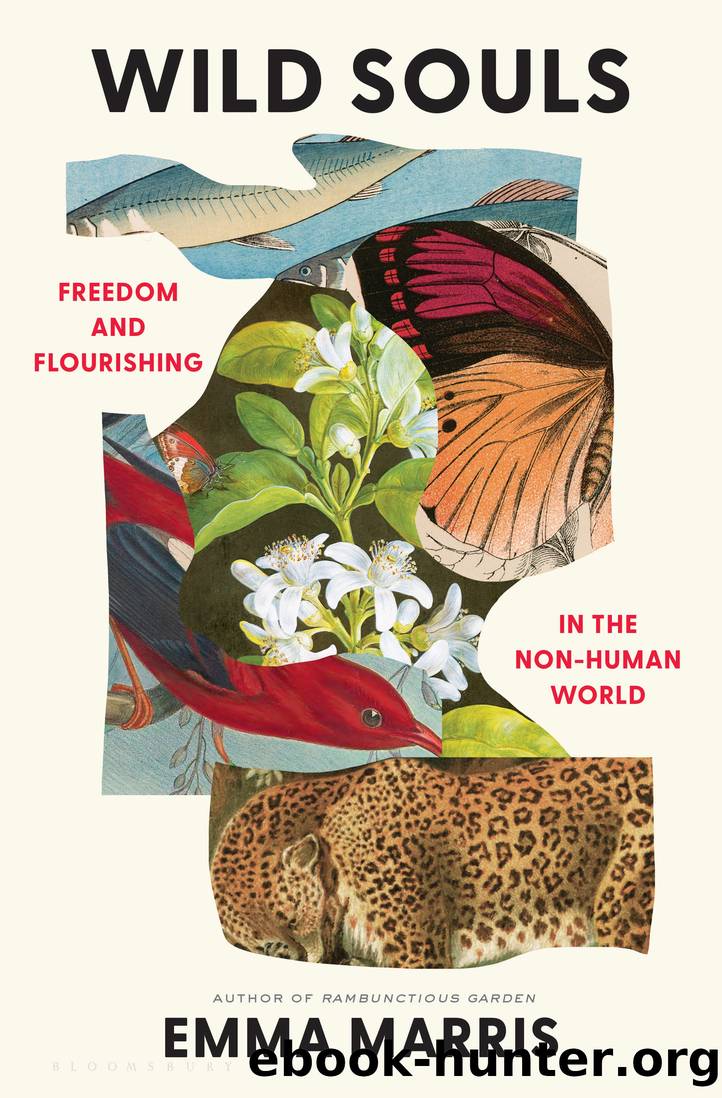Wild Souls: Freedom and Flourishing in the Non-Human World by Emma Marris

Author:Emma Marris [Marris, Emma]
Language: eng
Format: epub
ISBN: 9781635574968
Google: 6A0eEAAAQBAJ
Publisher: Bloomsbury Publishing
Published: 2021-06-28T23:00:00+00:00
Because the changes to the Galápagos are so fresh, conservationists see a real opportunity to prevent extinctions there through vigorous action, to do the right thing by at least one ecosystem. At the same time, the archipelago exhibits the characteristic conservation problems of islands, including introduced predators and vulnerable native species that sometimes seem determined to perish. And Campbellâs approach to fixing it is the standard approach for islands: kill the interlopers, undo new ecological dynamics, and try to prevent extinctions at all costs. Island conservation is all about killing these days. What I wanted to know was whether preventing these extinctions was always worth the price in blood.
When humans first came to the Galápagos, they brought beasts of burden, animals for meat, and the clever and voracious rat, hidden in the holds of their ships. The animals of the Galápagos, like island species everywhere, had let down their defenses over evolutionary time and simply could not cope with these bulldozing newcomers. Even when the animals humans brought didnât eat the native fauna, they did damage in other ways. Free-roaming goats ate so many plants that one estimate claimed that 60 percent of the Galápagosâ 194 endemic plants were threatened with extinctionânot to mention the islandsâ giant tortoises, which were starving to death with no plants to eat.
Rats have already killed off all the populations of the ironically named Indefatigable Galápagos mouse on Santa Cruz Island. In 2005, a single cat was found to be responsible for eating seven endangered Galápagos penguins every month at one breeding site on Isabela Islandâa rate of decline the colony could not have sustained if researchers hadnât killed the cat. Rats, cats, and dogs exiled the Floreana mockingbirdâa chocolate brown bird with a perky tailâto two minuscule offshore islets.
This pattern is not unique to the Galápagos. Non-native species are implicated in 62 percent of amphibian, reptile, bird, and mammal extinctions (although many had more than one cause listed). But importantly, of those cases where âalien speciesâ were listed as a driver of extinction, a whopping 86 percent of the species lost were âisland endemicsââoccurring only on islands.
It is important to note that introduced species are much less likely to cause extinctions on continents, because thereâs time and space for the native species to adapt to the new presence. Newcomers may well cause declines in abundanceâthe sizes of native speciesâ populations. For example, free-ranging domestic cats kill up to 4 billion birds and 22.3 billion mammals every year in the United States, according to one analysis. But as of 2020, cats havenât caused any extinctions in continental North America. Meanwhile, on islandsâeven islands as large as Australiaâcats have driven dozens of species extinct. Cats have been a factor in 63 extinctionsâevery single one of which was Australian or an âisland endemic.â In fact, all the species driven extinct since 1500 by non-native animal predators were either Australian or island endemics.
To me, this suggests that our thinking around âinvasive speciesâ needs to be fine-tuned. Instead of
Download
This site does not store any files on its server. We only index and link to content provided by other sites. Please contact the content providers to delete copyright contents if any and email us, we'll remove relevant links or contents immediately.
The Lonely City by Olivia Laing(4750)
Animal Frequency by Melissa Alvarez(4395)
All Creatures Great and Small by James Herriot(4233)
Walking by Henry David Thoreau(3894)
Exit West by Mohsin Hamid(3777)
Origin Story: A Big History of Everything by David Christian(3649)
COSMOS by Carl Sagan(3554)
How to Read Water: Clues and Patterns from Puddles to the Sea (Natural Navigation) by Tristan Gooley(3409)
Hedgerow by John Wright(3276)
The Inner Life of Animals by Peter Wohlleben(3259)
How to Read Nature by Tristan Gooley(3249)
How to Do Nothing by Jenny Odell(3232)
Project Animal Farm: An Accidental Journey into the Secret World of Farming and the Truth About Our Food by Sonia Faruqi(3177)
Origin Story by David Christian(3147)
Water by Ian Miller(3128)
A Forest Journey by John Perlin(3027)
The Plant Messiah by Carlos Magdalena(2883)
A Wilder Time by William E. Glassley(2818)
Forests: A Very Short Introduction by Jaboury Ghazoul(2790)
